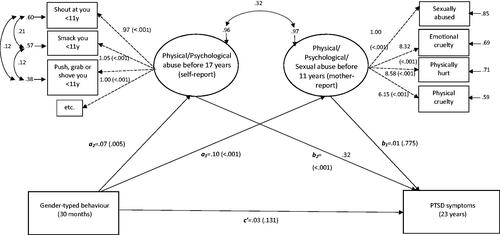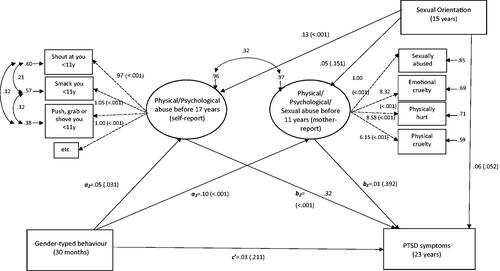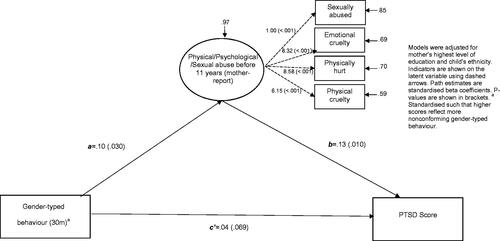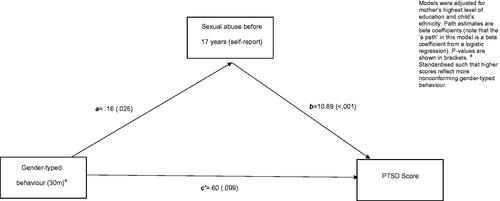Figures & data
Table 1. Separate effects for males and females for the association between gender-typed behaviour and abuse and PTSD symptoms.
Table 2. Separate effects for males and females for the association between sexual orientation at 15 years and abuse and PTSD symptoms.
Table 3. Separate effects for males and females for the association between gender-typed behaviour and sexual orientation at 15 years.
Figure 1. SEM for the effect of gender-typed behaviour at 30 months on PTSD symptoms in females, mediated by self-reported physical/psychological abuse and mother-reported abuse. Indicators are shown on latent variables using dashed arrows. Curved arrows show covariances between errors. Path estimates are standardised beta coefficients. P-values are shown in brackets.

Figure 2. SEM for the effect of gender-typed behaviour at 30 months on PTSD symptoms at 23 years in females, mediated by self-reported physical/psychological abuse and mother-reported abuse, adjusted for sexual orientation. Indicators are shown on latent variables using dashed arrows. Curved arrows show covariances between errors. Path estimates are standardised beta coefficients. P-values are shown in brackets.




